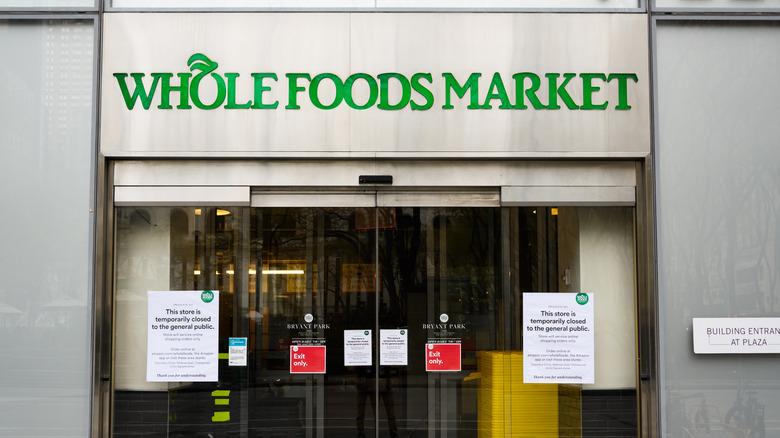This Is Who Whole Foods' 'Typical' Shopper Is
Whole Foods is one of the most popular grocery chains in America. Shoppers are often attracted to Whole Foods' natural, organic vibe and promise of a high quality and more expansive selection, but Whole Foods has had its fair share of controversy and scandal. In 2009 the owner, John Mackey, published an op-ed essentially blaming people for their poor health, offering "eating better" as an alternative to healthcare, prompting many to boycott the chain (via CNBC). Then in 2015, CNN reported that the New York City Department of Consumer Affairs found "systematic overcharging for pre-packaged foods," with the commissioner saying, "Our inspectors tell me this is the worst case of mislabeling they have seen in their careers."
Whole Foods landed in hot water again in 2019 when it announced, ahead of a global pandemic, that employees working fewer than 30 hours per week would no longer be eligible for health benefits. Still, Whole Foods remains popular, with some people maintaining their unwavering loyalty, so Whole Food clocks in at number 5 on Stacker's list of the most popular grocer stores in America. Whole Foods has a reputation for being a luxury grocery store, and with that comes a luxury price tag, but who is regularly shopping there?
A wealthy millennial is the typical customer
Business Insider reports that via an analytics firm, Numerator, they found that Whole Foods' typical customer is a millennial woman residing on the West Coast with a graduate degree and an income of more than $80,000 per year. According to the Whole Foods website, the average team member — who prepares food, checks out customers, and develops relationships with customers — makes $30,000 per year. This means that the average Whole Foods customer makes over two and a half times more in annual income than the average Whole Foods worker.
For reference, the United States Census Bureau reports that the median household income in America is $67,521 meaning the typical Whole Foods customer makes about $12,000 more per year than the typical entire household. This makes sense when you consider that Whole Foods is a significantly more expensive grocery store option over its competitors, by about 19% overall compared to other specialty grocers, and up to 40% when it comes to the meat department (via Business Insider).

